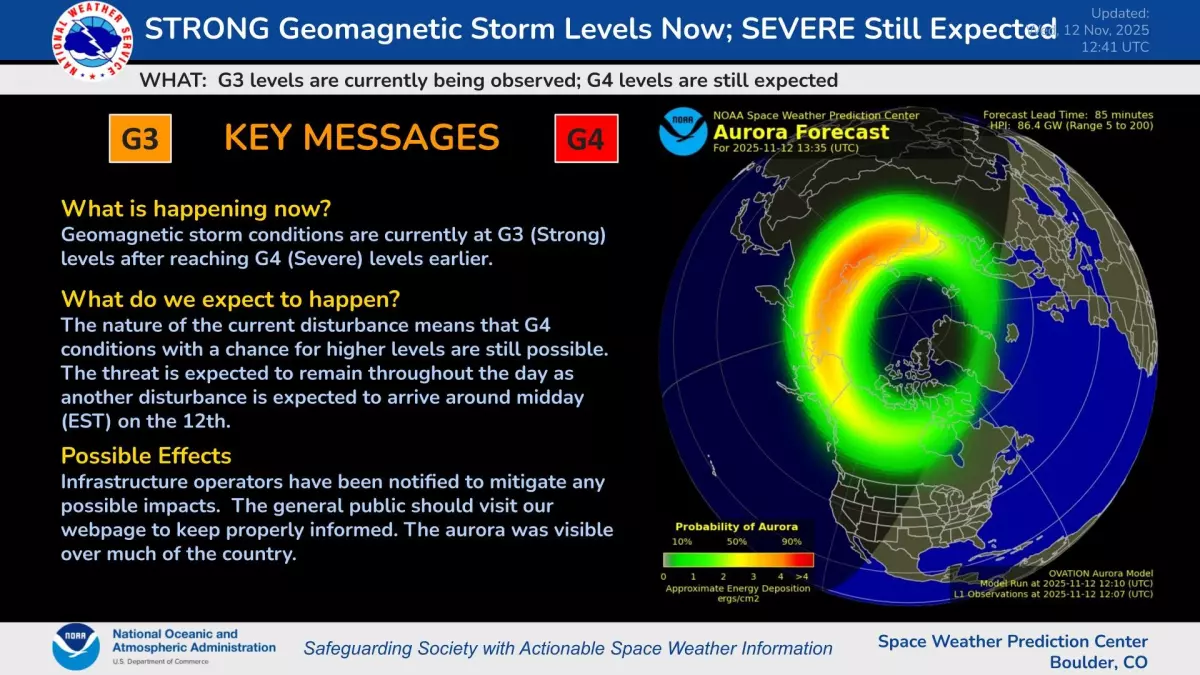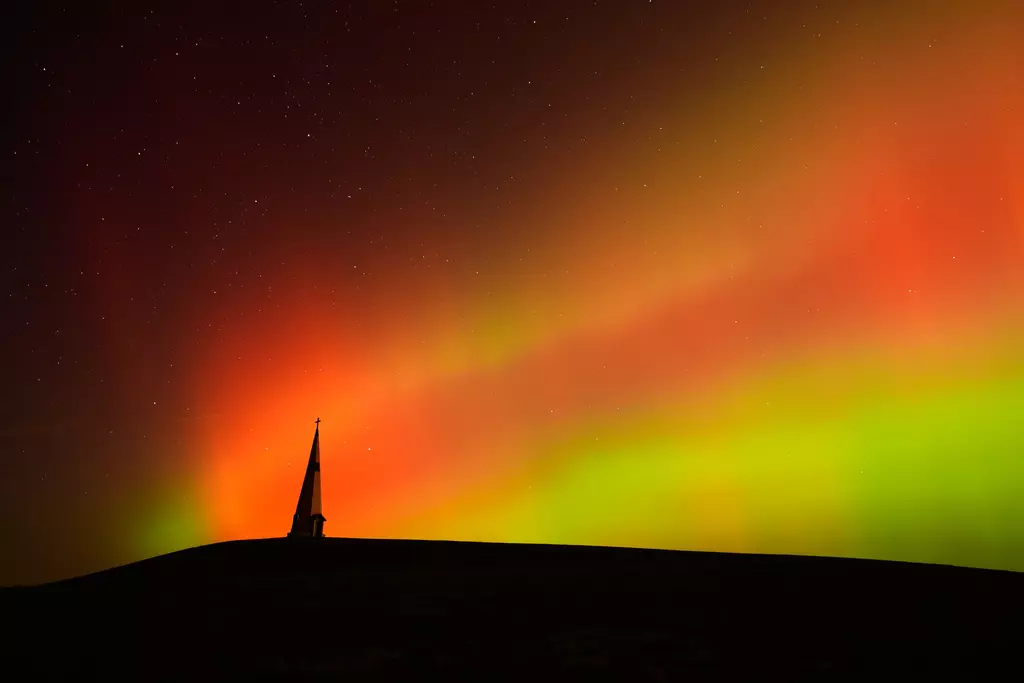Many Floridians got a glimpse of the northern lights with the cold snap Tuesday night.
The night sky served up colorful auroras as far south as Tampa, Daytona Beach, Winter Park and Titusville on Tuesday and early Wednesday. There were also sightings across the Panhandle and near Tallahassee and Jacksonville.
Space forecasters with the National Oceanic and Atmospheric Administration expect more rounds of the decorative displays for a few more days, and the southern “view line” will again pushed unusually far south.
Auroras, induced by severe solar storms, are commonly visible near the poles, where charged particles from the sun interact with atmosphere.
But sky gazers are spotting the lights deeper south into the United States and Europe because the sun is going through a major face-lift. Every 11 years, its poles swap places, causing magnetic twists and tangles along the way.
That’s been the case over the past few days, as the sun has burped out several bursts of energy called coronal mass ejections that reached Earth this week.
How bright the auroras are and how far south they are visible will depend on when the solar bursts get here and how they interact with atmosphere.
Last year, the strongest geomagnetic storm in two decades slammed Earth, producing light displays across the Northern Hemisphere.
Soon afterward, a powerful solar storm dazzled night watchers far from the Arctic Circle when dancing lights appeared in unexpected places, including Germany, the United Kingdom, New England and New York City.
How to see the northern lights
The sun’s active spurt is expected to last at least through the end of this year, though when solar activity peaks won’t be known until months after the fact, according to NASA and NOAA.
Solar storms can bring more than colorful lights to Earth.
When fast-moving particles and plasma slam into Earth’s magnetic field, they can temporarily disrupt the power grid. Space weather can also interfere with air traffic control radio and satellites in orbit. Severe storms can scramble other radio and GPS communications.
So far, there have been no reports of this happening on Tuesday or Wednesday,
Northern lights forecasts can be found on NOAA’s Space Weather Prediction Center website or an aurora forecasting app.
Consider aurora-watching in a quiet, dark area away from city lights. And check the weather forecast because clouds can cover up the spectacle entirely.
Peak viewing could be anytime, from 10 p.m. to 2 a.m., but earlier or later bursts are possible.
Taking a picture with a smartphone camera may also reveal hints of the aurora that aren’t visible to the naked eye.
Information from the Associated Press was used in this report.








